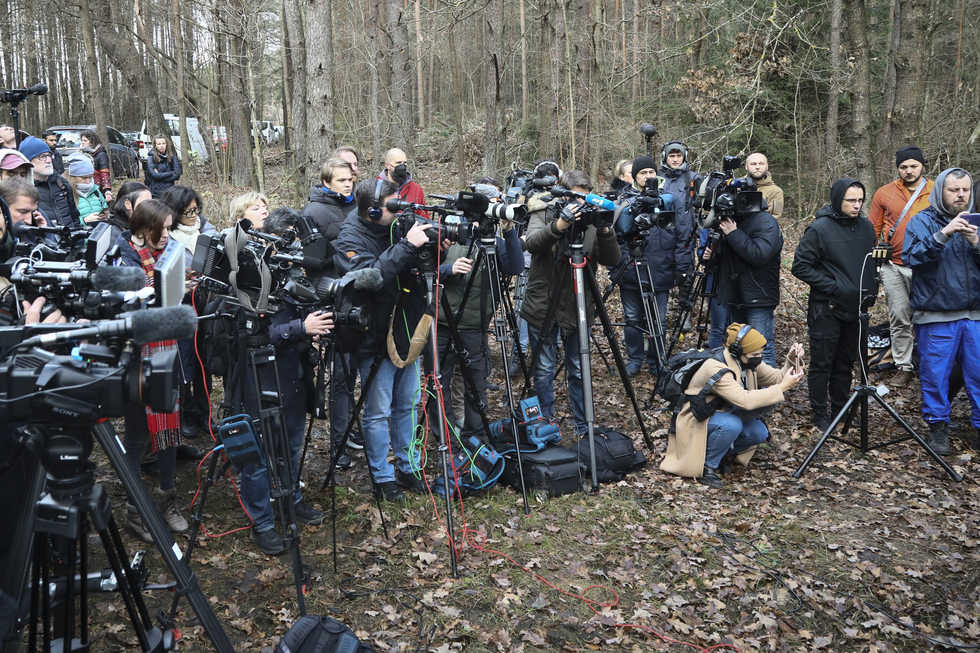More targeted and coordinated

Mrs Sharma, India has entered migration agreements with a number of countries, among others Germany. What is the overall idea behind these agreements? And why do they make sense for India?
Seeta Sharma: India has a demographic dividend with a median age of 28 years and over 600 million people between 18 and 35 years old, the largest group of millennials and Gen Zs globally. If we compare these numbers to Germany, on the other hand, we realize that it faces a declining population with a median age of 45 years and about 14 million in the 18-35 age group, a number that is decreasing.
With an average of about 10 million people joining the workforce annually, India aims to supply skilled labor to countries facing demographic challenges. In return, India is creating opportunities for its youth by signing migration and mobility agreements. It has 20 such agreements across the globe with some are still in the planning stages.
Generally, India is well aware of the domestic pressures – especially within EU nations – to address irregular migration, and has taken measure to repatriate its citizens who are in irregular status abroad. By promoting structured regular migration, India aims to prevent its citizens from being on the fringes of foreign labor markets. Additionally, India recognizes that its diaspora can strengthen international partnerships, build alliances, and attract investments, thereby contributing to national development.
Germany is a good example here: The country faces demographic decline and labor shortages in almost all sectors and also deals with a high influx of irregular labor and refugees. Currently, over 200,000 Indian nationals live in Germany, mostly high-skilled workers and students.
Germany and India signed a Migration and Mobility Partnership Agreement (MMPA) in December 2022. Other than the overarching objectives, what specific elements does it include?
The agreement commits both governments to enable person mobility according to national laws and policies. It structures skill transfer to the home country, fair migration and adherence to decent work principles. Particular emphasis lies on the cooperation between government and government-funded organizations for ethical recruitment of qualified professionals.
The MMPA allows these qualified young Indians to gain professional experience, study, start vocational training, or work in Germany, addressing the urgent need for skilled workers in the German labor market. It details how various categories of persons (students, apprentices, skilled workers, volunteers, interns, language learners, young professionals, inter-corporate transferees, family members, and specialists seeking employment) can enter and stay in Germany. It also includes specifics on the duration of stay and the conditions under which they can engage with the labor market. This is embedded in a framework providing scholarships, post-study visas, tailored information for Indians as well as language lessons and pre-integration support.
Since India is quite a large country, the MMPA theoretically also proposes bilateral placement agreements between the German Federal Employment Agency and Indian state or national level parties, particularly in healthcare, hospitality, mechanics, and electrical work.
Lastly, in the agreement Germany and India also commit to fight irregular migration and human trafficking providing clear procedures for returning Indian nationals required to leave Germany. It outlines specific steps for the voluntary return of individuals and incentivizes this through financial support and reintegration projects. And it simplifies procedures for forced returns, including documentation and cost responsibilities. This, however, proves to be difficult on the ground, since the process of identification is not as easy as it sounds. India is more than willing to take back individuals as long as they can be proven to be Indian nationals. Therefore, the agreement also encourages the exchange of experts and training of officers to combat illegal migration, including training on identifying fraudulent documents and sharing information on trafficking and smuggling networks.
We have heard a lot on how this agreement benefits Germany. Does the MMPA also meet Indian expectations? What could the two countries do to enhance the implementation of the agreement?
Of course, these agreements are a big opportunity for Indian nationals – and we have also included engagement with the Indian diaspora in Germany, as well as cooperation in vocational education and training in order to transfer skills back to India.
However, there remain especially two main challenges for a successful and large-scale implementation. First, the MMPA between Germany and India does not provide for any preferential conditions of entry for Indians and only commits to already existing immigration laws for any third-party nationals – unlike e.g. the German agreements with some Balkan states, in which the recognition of skills and certificates has played a much more prominent role. This means that Indians are often effectively stuck in recognition processes.
This brings me to my second point. Although the agreement is comprehensive, its implementation needs to be expedited. Since the signing some one and a half years ago, the already low ambition of an exchange of 3.000 workers annually has not been achieved. To put this into perspective, US processed 380.000 employment visas for Indians and their family members as part of their workforce last year. So, while Germany has demonstrated a very clear commitment to this agreement, it might require additional measures to work out well in practice.
For instance, I find it beneficial to establish migration corridors, effectively linking city to city or region to region. This would provide a clearer framework for potential migrants and improve the chances of forming some form of community in specific cities in Germany. This would then also help in increasing awareness about Germany as an attractive location itself. We need success stories of Indians moving to Germany, which then have to spread across a larger network of Indians. As of right now, there is no strong diaspora in Germany – and some Indians therefore might not even consider it an option. Integration is easier with community support, which from an Indian perspective might be more prominent in other countries. Another factor are the high language requirements. India is to a certain extent an English-speaking nation and historically linked with the U.K. Learning German is a time-consuming and costly affair for any worker that might just as well choose a country where learning a new language might not be necessary. Therefore, I am convinced that lowering the language requirements for entry and commit to honing those skills when already integrated in a workplace in Germany would be beneficial.
But this, of course, this does not work without the proper recognition of qualifications. This process, as it stands, is too complex and needs streamlining. Currently, some certified German vocational education and training courses taught in India are not being accepted back in Germany. We need a better institutional structure paving the way for mutual recognition – also in terms of accepting the newly learned qualifications of Indians upon their return to India. As a whole, German interventions in India generally need better coordination, also in establishing links back to Germany so as to establish institutional structures to facilitate mobility.
Overall, while the foundations are strong and the agreement has the potential to address labor shortages, more structured cooperation and targeted efforts from both sides are required to fully realize the potential of the MMPA.
Interview was conducted by Joscha Wendland.
About

Seeta Sharma is an independent consultant who works as a Senior Advisor to the Ministry of Skill Development and Entrepreneurship of the Government of India. The views expressed in this interview are her personal views and in no way reflect the position of the Government of India.
The opinions and statements of the guest author expressed in the article do not necessarily reflect the position of the Friedrich-Ebert-Stiftung.



